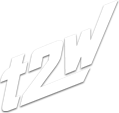AriaS
Active member
- Messages
- 245
- Likes
- 94
Here is how the risk management works:
First of all you need to assess what maximal drawdown (in money! not in %) will make you emotionally comfortable, so that you don't start closing positions only because being scared. Obviously this decision will depend on your perception of yourself and all your capital. It's very personal. For example, someone who only has $100k of funds might feel that his max comfortable dd is 2k, while for someone else this would be 5k, and someone will panic if they see -$100.
For example, lest say that for you it's 1k.
Then you need to back test your strategy and see what volume you need to be trading so that the max dd doesn't exceed 1k.
Then you need to see the maximum margin you will be using (deposit load). This will depend on your strategy and the leverage of your account. Your backtest will show this for you. But make sure the backtester has the correct leverage in the inputs.
Then you can make an adequate deposit.
For example if your account's margin stop is 50% of the used margin and your deposit load will be 50% of the balance, then you can deposit 2k and feel safe, because your max dd will be 1k (50%), and the margin stop will get activated only if you reach dd of 1.5k (75%). You can deposit even more, but if you know that you will start closing your trades yourself anyway, when they reach dd of 1.1k or 1.2k so... It's all personal. After all, your goal is to be in control and feel comfortable. Otherwise mistakes and losses are inevitable.
Again: Deposit = 2k, max expected dd = 1k, max deposit load (used margin) = 1k, margin stop hits when equity is $500 (50% of the used margin).
Also you should make sure that your account's leverage is fixed. I saw a Swiss broker that changed it during nights or weekends. This can be a huge problem.
First of all you need to assess what maximal drawdown (in money! not in %) will make you emotionally comfortable, so that you don't start closing positions only because being scared. Obviously this decision will depend on your perception of yourself and all your capital. It's very personal. For example, someone who only has $100k of funds might feel that his max comfortable dd is 2k, while for someone else this would be 5k, and someone will panic if they see -$100.
For example, lest say that for you it's 1k.
Then you need to back test your strategy and see what volume you need to be trading so that the max dd doesn't exceed 1k.
Then you need to see the maximum margin you will be using (deposit load). This will depend on your strategy and the leverage of your account. Your backtest will show this for you. But make sure the backtester has the correct leverage in the inputs.
Then you can make an adequate deposit.
For example if your account's margin stop is 50% of the used margin and your deposit load will be 50% of the balance, then you can deposit 2k and feel safe, because your max dd will be 1k (50%), and the margin stop will get activated only if you reach dd of 1.5k (75%). You can deposit even more, but if you know that you will start closing your trades yourself anyway, when they reach dd of 1.1k or 1.2k so... It's all personal. After all, your goal is to be in control and feel comfortable. Otherwise mistakes and losses are inevitable.
Again: Deposit = 2k, max expected dd = 1k, max deposit load (used margin) = 1k, margin stop hits when equity is $500 (50% of the used margin).
Also you should make sure that your account's leverage is fixed. I saw a Swiss broker that changed it during nights or weekends. This can be a huge problem.
Last edited:
